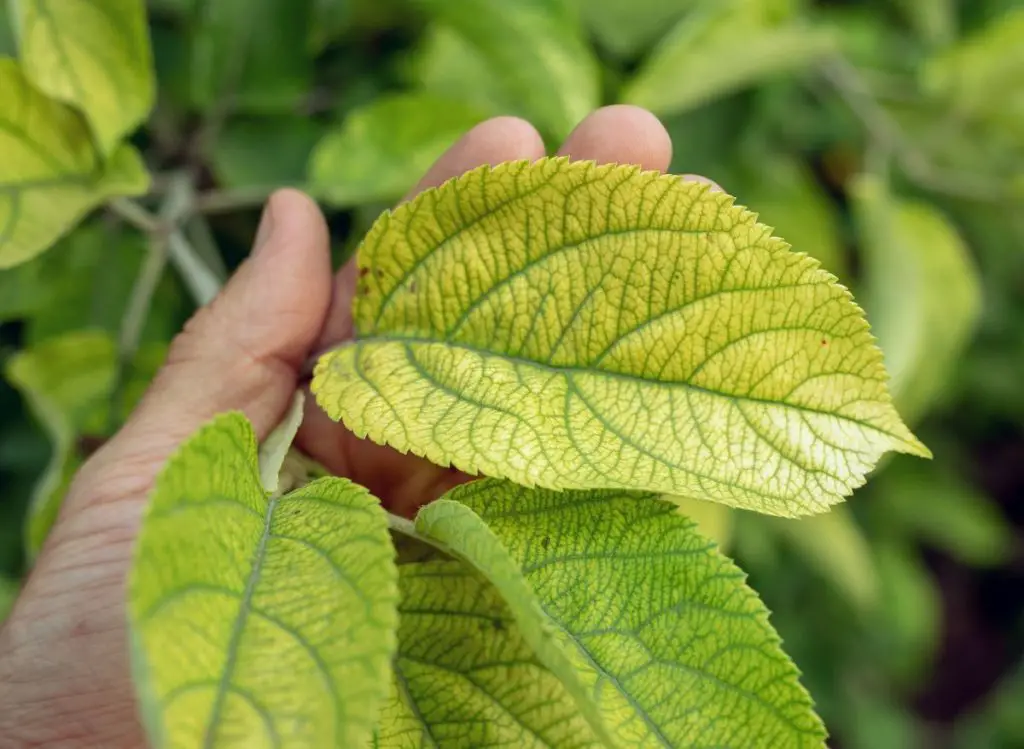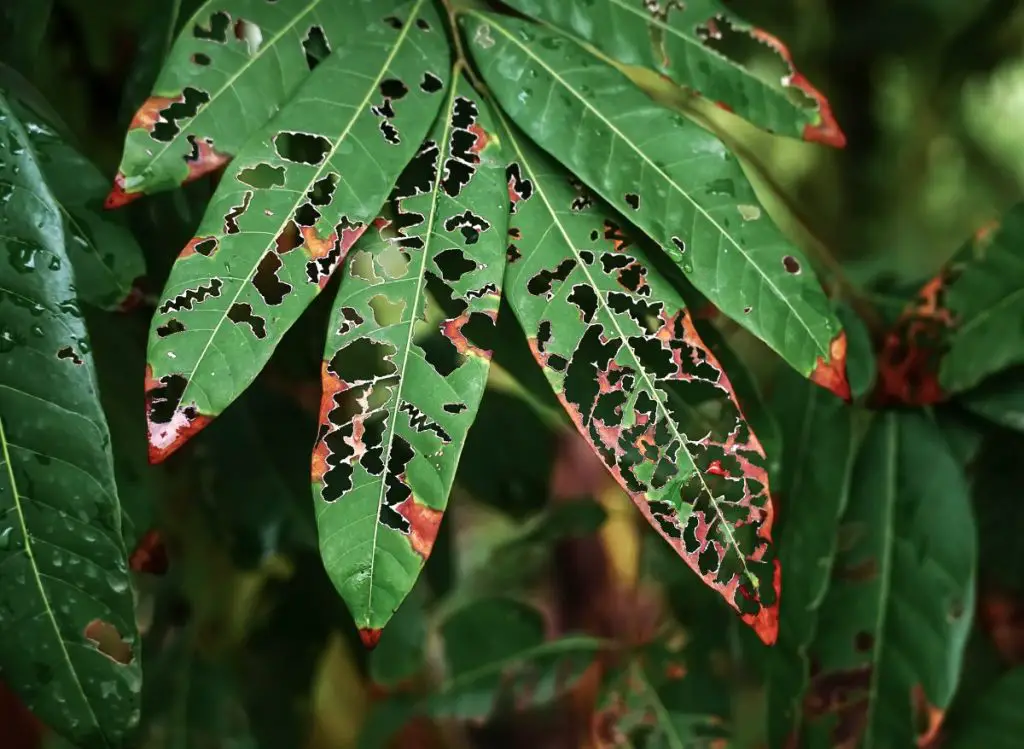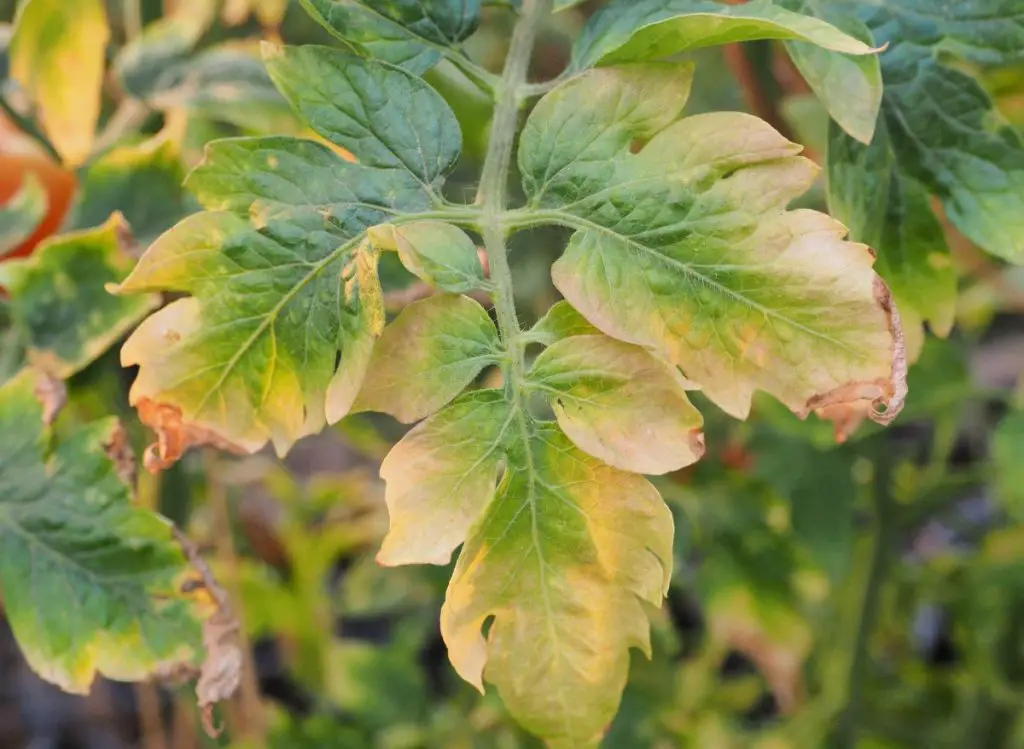
As a gardener or plant lover, it can be frustrating to see your plants not thriving as they should. One of the common issues that plants encounter is iron deficiency. Just like humans, plants need iron for proper growth and development.
Iron is a micronutrient that plays an essential role in the formation of chlorophyll, which is vital for photosynthesis. Without enough iron, plants will suffer, and you’ll start to see signs of iron deficiency.
Read on to explore the symptoms of iron deficiency in plants and how to identify them. Read this article if you wonder how to quickly and effectively reduce Iron in soil.
1- Yellowing of Leaves
One of the most common symptoms of iron deficiency in plants is the yellowing of young leaves while old leaves remain green (Source: Utah State University) Iron deficiency causes the yellowing of the leaves to start at the base of the leaf and work its way toward the top.
Yellowing of leaves is also known as chlorosis, which indicates a deficiency of chlorophyll, responsible for photosynthesis. In many cases, the yellowing starts between the veins and spreads outwards, which clearly indicates that your plants have low iron levels.
Furthermore, the leaves will also become smaller in size, and they may even begin to curl up. In severe cases, the entire leaf can turn yellow, and the plant may drop its leaves.
2- Stunted Growth
Another common symptom of iron deficiency is stunted growth. The lack of iron prevents the plant from producing enough chlorophyll, which is essential for photosynthesis (Source: University of Arizona)
Without enough chlorophyll, the plant cannot produce enough energy to support its growth. As a result, the plant may become stunted, and its leaves may not develop as they should.
Iron deficiency directly affects the plant’s ability to photosynthesize, and as a result, the plant’s growth will begin to slow down. You will notice that the plant looks disproportionately small, and new growth will be slow, wiry, and feeble.
3- Poor Flowering and Fruit Development
Iron is essential for flower and fruit development. Without enough iron, a plant may produce fewer flowers and fruits than it should. Also, the flowers and fruits may also be smaller than normal (Source: University of California) If the iron deficiency is severe, the plant may not produce any flowers or fruits at all.
In other words, Iron deficiency causes a plant to channel little available energy to grow leaves and roots, which means there may be little to no energy left for the production of flowers, fruits, or even seeds.
4- Brown Spots on Leaves
As the iron deficiency progresses, you may notice brown spots appearing on the leaves, according to Oklahoma State University experts. The spots can vary in size and shape and may be surrounded by a yellow halo.
If left unaddressed, the brown spots can spread and lead to the death of the plant. Iron is a micronutrient that helps plants in the production of chlorophyll, a necessary component for photosynthesis. However, when your plants start exhibiting brown spots, it could be a sign of iron deficiency.

5- Thin, Brittle Stems
Iron deficiency can also affect the plant’s stems. The stems may become thin and brittle, making them vulnerable to breakage. This is because the lack of iron weakens the plant’s overall structure.
According to New Mexico State University experts, plants that suffer most from Iron deficiency include apples, photinia, roses, willows, mulberry, maples, poplars, pears, Hawthorne, stone fruits, pecan, and sycamores.
6- Necrosis Symptoms
Iron deficiency can have significant harmful effects on plant tissues. In severe cases, the plant’s leaves and other plant tissues may experience tissue death or necrosis.
According to the University of Missouri, too much fertilizer causes salt burn symptoms, including marginal browning or necrosis of leaves. The sign begins at the tip and moves to the base of the leaf along the edges.
Moreover, necrosis symptoms often appear as brown or black spots on leaf edges and other parts of the plant. In some cases, the necrosis could even spread to the plant’s stems and roots.

7- Lack of Vigor
Iron-deficient plants exhibit a lack of vigor, which means they may not be able to withstand harsh environmental conditions, which could also make them more susceptible to pest infestations and diseases.
Furthermore, iron deficiency often hinders plants’ ability to absorb other nutrients, making it hard for them to get all the nutrients they need.
The table below contains common iron-deficient plants:
| Common Plants sensitive to iron deficiency |
| – Rhododendron (Rhodoendron) – Azalea (Rhodoendron) – Blueberry (Vaccinium) – Magonia (Magnolia) – Sweetgum (Liquidamber) – Birch (Betula) – Dogwood (Cornus) – Holly (Ilex) – Oak (Quercus) – Pine (Pinus) |
What to read next:
- How To Effectively Manage Too Much Iron In Your Garden’s Soil.
- Must know about Iron Deficiency in Plants and how to combat It!
- How Too Much Iron in Lawn Can Impact Your Lawn’s Health.
Wrapping Up
Iron deficiency can be a challenging problem for gardeners and plant lovers as it can manifest in various ways. It is crucial to identify the symptoms of iron deficiency early enough and apply the appropriate solutions to help your plant recover.
Some of the ways you can prevent or treat iron deficiency include adding organic matter to the soil, using iron supplements, avoiding over-fertilizing plants, applying iron-rich fertilizer, improving soil drainage, and reducing soil pH. However, I believe that it is crucial to identify the root cause of the deficiency to prevent it from recurring.
With the tips outlined in this article, I believe that you can improve your understanding of iron deficiency symptoms in plants and take the necessary measures to maintain healthy and vibrant plants.

